Respirator Types
The two basic types of respirators are air-purifying (APR) and supplied-air respirators.
Air-purifying respirators remove airborne contaminants such as particles, toxic vapors, and/or gases. They are appropriate for use in environments of low-level contamination and in environments where there is sufficient oxygen. There are four common classes of APR facepieces:
-
Disposable respirators (dust masks) provide protection against nuisance dusts and particulates.
It's important to know that lead workers should not use filtering facepieces (single- or double-strap dust masks) while performing work that exposes the worker to asbestos or lead.
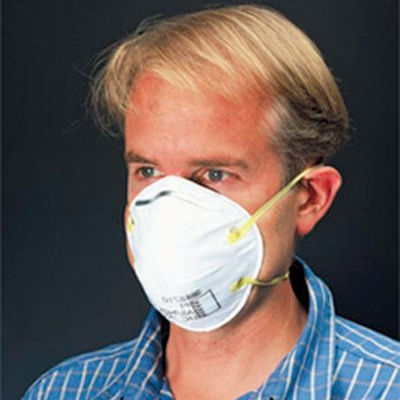
-
Quarter-mask respirators use cartridges or cloth filters. They fit from the top of the nose to the top of the chin. The breathing resistance is high in comparison to larger masks.
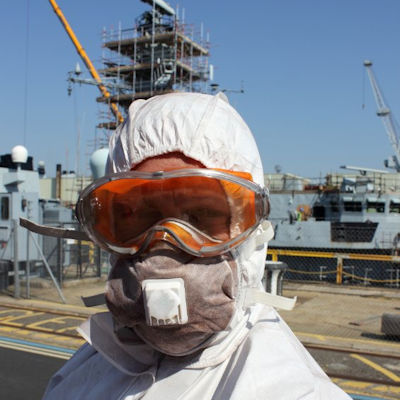
-
Half-face respirators can be used for protection against most vapors, acid gases, dust or welding fumes. Cartridges/filters must match contaminant(s) and be changed periodically.
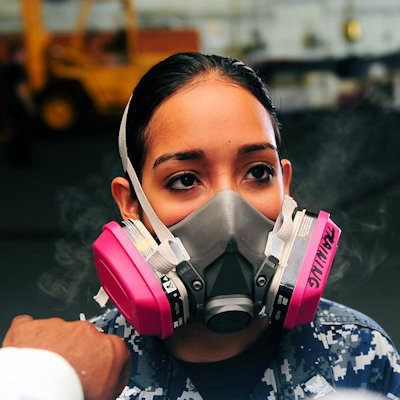
-
Full-face respirators are more protective than half-face respirators and the most protective air-purifying respirator. They can also be used for protection against most vapors, acid gases, dust or welding fumes. The face-shield protects face and eyes from irritants and contaminants. Cartridges/filters must match contaminant(s) and be changed periodically.
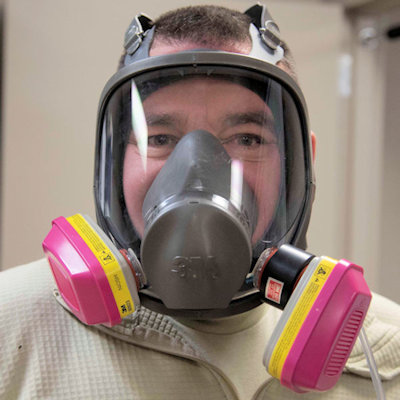
Supplied-air Respirators provide clean air from either a portable cylinder or from a remote source and are used in environments too hazardous for air-purifying respirators.
-
Loose-fitting powered-air-purifying respirators (PAPR) offer breathing comfort from a battery-powered fan which pulls air through filters and circulates air throughout helmet/hood. They can be worn by most workers who have beards. Cartridges/filters must match contaminant(s) and be changed periodically.

-
A Self-Contained Breathing Apparatus (SCBA) is used for entry and escape from atmospheres that are considered immediately dangerous to life and health (IDLH) or oxygen deficient. They use their own air tank.
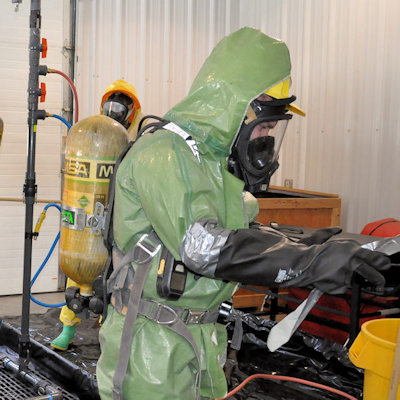
If exposure monitoring or experience indicates airborne exposures to contaminants other than lead such as silica, solvents, or polyurethane coatings, these exposures must be considered when selecting respiratory protection.
Knowledge Check Choose the best answer for the question.
3-5. Which type of air-purifying respirator is the most protective?
You forgot to answer the question!
